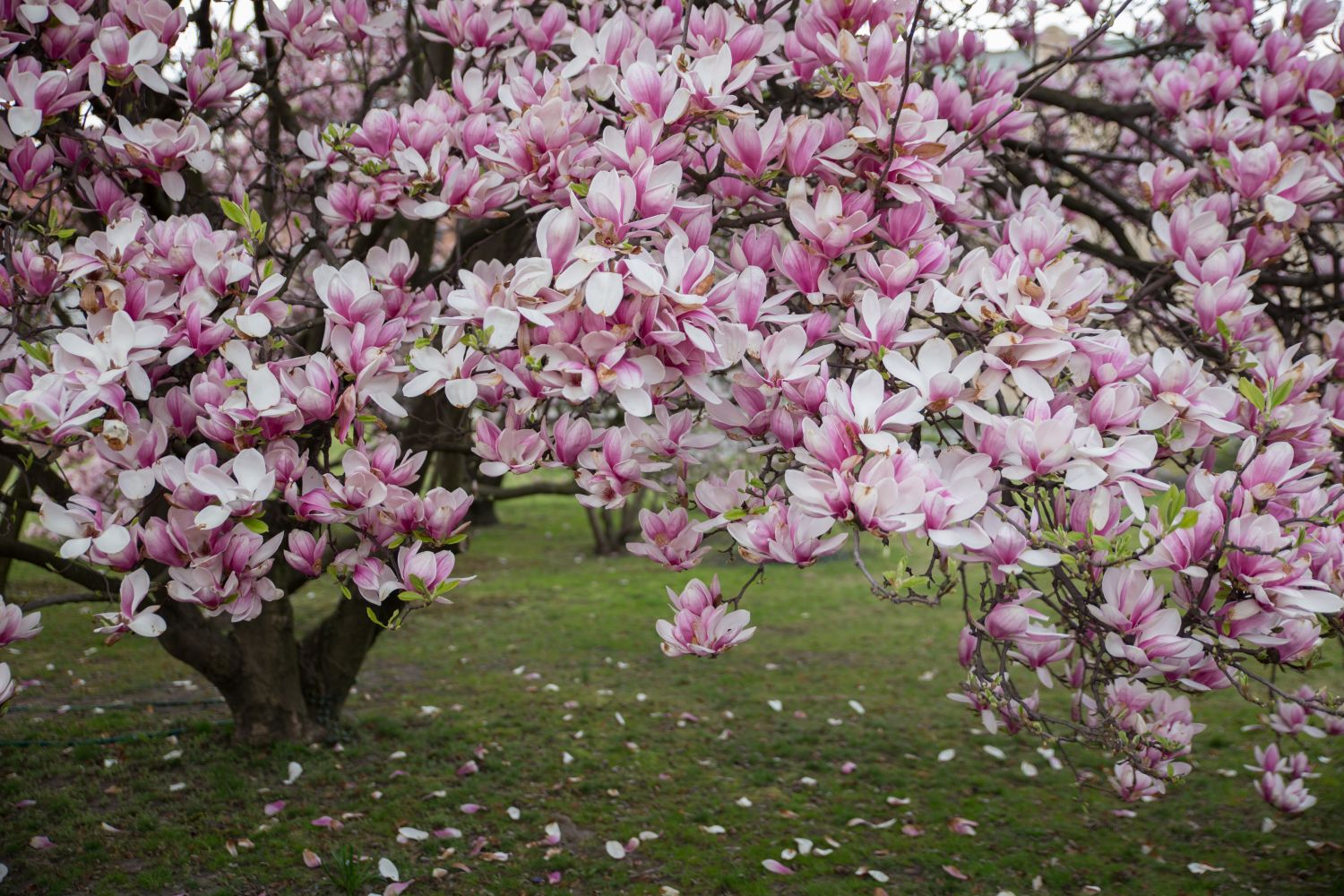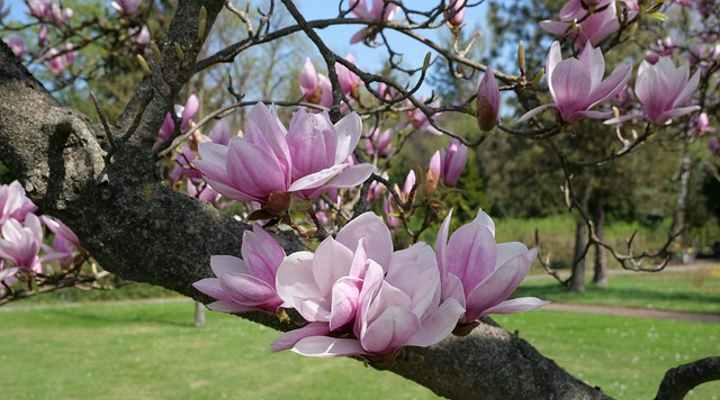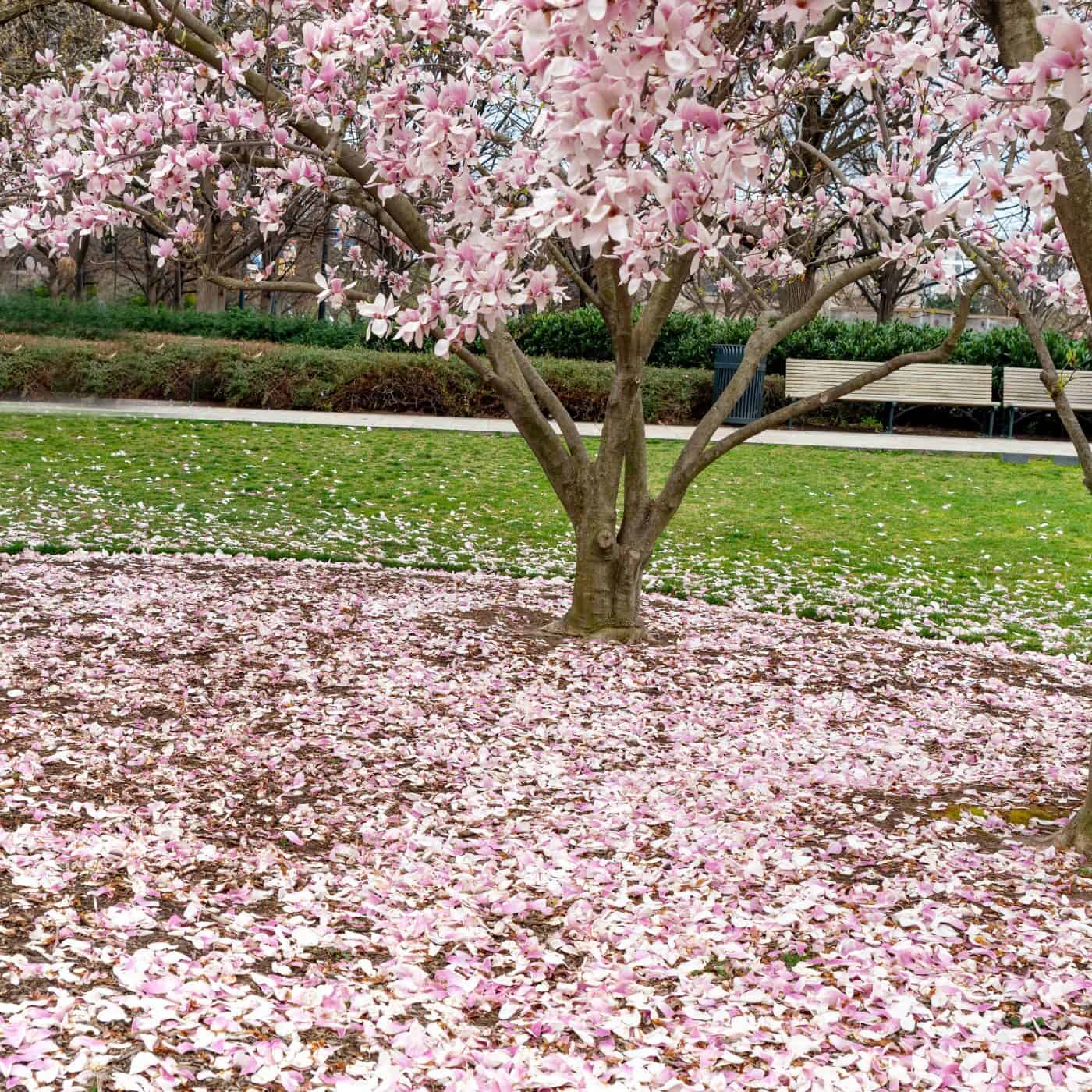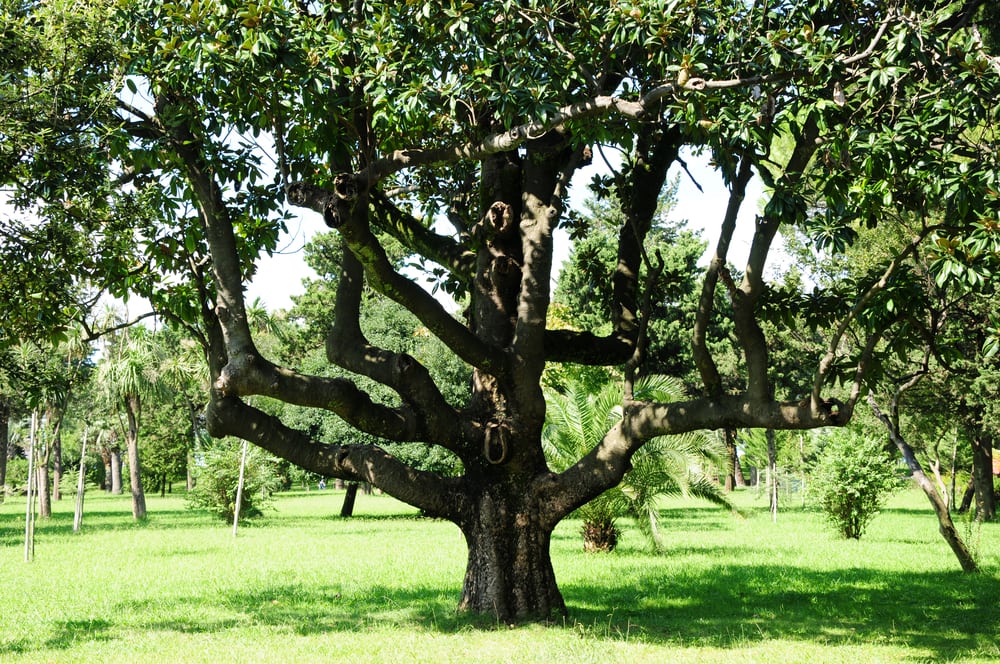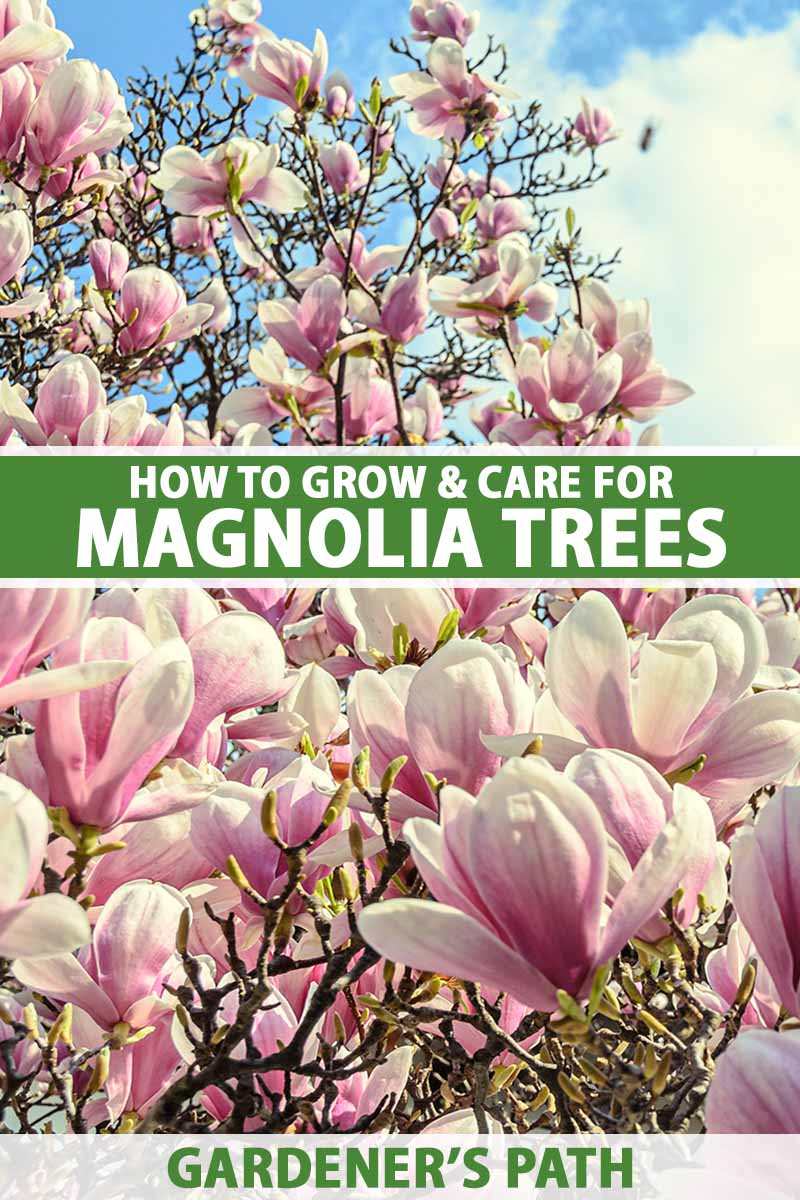Understanding the Factors that Influence Magnolia Tree Size
Magnolia trees are known for their stunning beauty and majestic growth, but have you ever wondered how big they can grow? The answer lies in understanding the various factors that influence their size. Climate, soil quality, watering, and pruning are all crucial elements that can impact the overall size and shape of a magnolia tree.
Climate plays a significant role in determining the growth rate and size of magnolia trees. Trees growing in warmer climates with mild winters tend to grow faster and larger than those in cooler climates with harsh winters. For example, the Southern Magnolia (Magnolia grandiflora) can grow up to 60 feet tall in the southeastern United States, while the same tree may only reach 30 feet tall in the northeastern United States.
Soil quality is another essential factor that affects magnolia tree growth. Trees growing in well-draining, fertile soil with a pH between 5.5 and 6.5 tend to thrive and grow larger than those in poor soil conditions. Regular watering is also crucial, as magnolia trees prefer moist soil but can be susceptible to root rot if the soil is too wet.
Pruning is a critical factor in maintaining the size and shape of magnolia trees. Regular pruning can help control the tree’s growth, promote healthy branching, and encourage blooming. However, over-pruning can stress the tree and lead to reduced growth or even disease.
By understanding these factors, you can better appreciate the complexity of magnolia tree growth and take steps to create an optimal environment for your tree to thrive. Whether you’re looking to grow a majestic Southern Magnolia or a compact Little Gem Magnolia, knowing how to care for your tree is essential for achieving its full growth potential.
How to Choose the Right Magnolia Tree Variety for Your Space
With over 200 species of magnolia trees, selecting the right variety for your space can be a daunting task. However, by understanding the different growth habits, sizes, and bloom times of magnolia trees, you can make an informed decision that suits your needs. Whether you’re looking for a compact tree for a small garden or a majestic tree for a large landscape, there’s a magnolia variety that’s perfect for you.
For small gardens or containers, consider the Little Gem Magnolia (Magnolia grandiflora ‘Little Gem’) or the Dwarf Southern Magnolia (Magnolia grandiflora ‘Compacta’). These varieties grow to be around 10-15 feet tall and 6-8 feet wide, making them ideal for compact spaces. They also produce stunning white blooms in the spring and summer months.
For larger landscapes, the Southern Magnolia (Magnolia grandiflora) or the Sweetbay Magnolia (Magnolia virginiana) are excellent choices. These varieties can grow up to 60 feet tall and 30 feet wide, providing a majestic presence in any landscape. They also produce large, showy blooms in the spring and summer months.
When selecting a magnolia tree variety, it’s also important to consider the bloom time. Some varieties, such as the Jane Magnolia (Magnolia ‘Jane’) and the Black Tulip Magnolia (Magnolia ‘Black Tulip’), produce blooms in the early spring, while others, such as the Southern Magnolia and the Sweetbay Magnolia, produce blooms in the late spring and summer.
By choosing the right magnolia tree variety for your space, you can enjoy the beauty and benefits of these stunning trees for years to come. Whether you’re looking for a compact tree or a majestic tree, there’s a magnolia variety that’s perfect for you.
The Average Height and Spread of Magnolia Trees
When it comes to understanding how big magnolia trees can grow, it’s essential to consider the average height and spread of different varieties. While some magnolia trees can grow to be quite large, others remain compact and smaller in size.
On average, magnolia trees can grow to be anywhere from 10 to 60 feet tall, with a spread of 6 to 30 feet wide. However, some varieties, such as the Southern Magnolia (Magnolia grandiflora), can grow to be much larger, reaching heights of up to 80 feet tall and spreads of up to 40 feet wide.
According to data from the National Arbor Day Foundation, the average height of a mature magnolia tree is around 40 feet tall, with a spread of around 20 feet wide. However, it’s essential to note that these numbers can vary significantly depending on the specific variety, growing conditions, and care.
Here are some approximate height and spread ranges for different magnolia tree varieties:
- Southern Magnolia (Magnolia grandiflora): 40-80 feet tall, 20-40 feet wide
- Little Gem Magnolia (Magnolia grandiflora ‘Little Gem’): 10-20 feet tall, 6-10 feet wide
- Dwarf Southern Magnolia (Magnolia grandiflora ‘Compacta’): 15-30 feet tall, 10-20 feet wide
- Sweetbay Magnolia (Magnolia virginiana): 30-60 feet tall, 15-30 feet wide
By understanding the average height and spread of magnolia trees, you can better plan and care for your tree, ensuring it reaches its full growth potential.
Factors that Can Limit Magnolia Tree Growth
While magnolia trees are known for their majestic growth, there are several factors that can limit their growth and impact their overall size and shape. Understanding these factors is crucial to providing the best possible care for your magnolia tree and ensuring it reaches its full growth potential.
Disease is one of the most common factors that can limit magnolia tree growth. Fungal diseases such as root rot and leaf spot can cause significant damage to the tree, leading to reduced growth and even death. Bacterial diseases such as fire blight can also impact magnolia tree growth, causing blackened leaves and stems.
Pests are another factor that can limit magnolia tree growth. Insects such as scales, mealybugs, and spider mites can feed on the tree’s sap, causing damage to the leaves and stems. These pests can also transmit diseases to the tree, further impacting its growth.
Environmental stressors such as drought, extreme temperatures, and poor soil quality can also limit magnolia tree growth. Magnolia trees prefer well-draining soil and full sun to partial shade, and can be sensitive to extreme temperatures and drought.
To address these issues, it’s essential to provide regular care and maintenance for your magnolia tree. This includes watering the tree regularly, fertilizing it annually, and pruning it to maintain its shape and promote healthy growth.
Regular inspections can also help identify potential issues before they become major problems. Look for signs of disease or pests, such as blackened leaves or white powdery patches, and take action promptly to address the issue.
By understanding the factors that can limit magnolia tree growth, you can take steps to prevent these issues and ensure your tree reaches its full growth potential. With proper care and maintenance, your magnolia tree can thrive and provide beauty and shade for years to come.
Pruning and Training Techniques for Optimal Growth
Pruning and training are essential techniques for promoting healthy growth and maintaining the desired shape and size of magnolia trees. By pruning your magnolia tree regularly, you can encourage new growth, remove dead or diseased branches, and maintain the tree’s overall shape and size.
There are several pruning techniques that can be used on magnolia trees, including:
- Thinning: This involves removing select branches to allow more sunlight to reach the remaining branches and promote healthy growth.
- Reduction: This involves reducing the size of the tree by cutting back the tips of the branches.
- Shaping: This involves pruning the tree to maintain a specific shape or size.
When pruning your magnolia tree, it’s essential to use the right tools and techniques to avoid damaging the tree. Use sharp, clean pruning tools and make clean cuts just above a growth node. Avoid pruning too much of the tree at once, as this can cause stress and lead to disease or pest problems.
In addition to pruning, training is also an important technique for promoting healthy growth and maintaining the desired shape and size of magnolia trees. Training involves gently bending or tying the branches of the tree to encourage them to grow in a specific direction or shape.
By combining pruning and training techniques, you can promote healthy growth and maintain the desired shape and size of your magnolia tree. This will help ensure that your tree reaches its full growth potential and provides beauty and shade for years to come.
Some popular training techniques for magnolia trees include:
- Staking: This involves using stakes to support the tree and encourage it to grow upright.
- Tying: This involves using ties to gently bend the branches of the tree and encourage them to grow in a specific direction.
- Pruning to a central leader: This involves pruning the tree to maintain a central leader and encourage the branches to grow outwards from the center of the tree.
By using these pruning and training techniques, you can promote healthy growth and maintain the desired shape and size of your magnolia tree.
How to Care for Your Magnolia Tree to Ensure Maximum Growth
Caring for your magnolia tree is essential to ensure maximum growth and optimal health. By providing the right conditions and regular maintenance, you can help your tree thrive and reach its full potential.
Watering is one of the most critical aspects of magnolia tree care. Magnolia trees prefer well-draining soil and consistent moisture, especially during the first year after planting. Water your tree regularly, but avoid overwatering, which can lead to root rot and other problems.
Fertilizing is also essential for magnolia tree growth. Feed your tree with a balanced fertilizer in the early growing season, following the manufacturer’s instructions. Avoid overfertilizing, as this can damage the tree’s roots and lead to other problems.
Mulching is another important aspect of magnolia tree care. Mulch helps retain moisture, suppress weeds, and regulate soil temperature. Apply a 2-3 inch layer of organic mulch around the base of your tree, keeping it a few inches away from the trunk.
Pruning is also crucial for magnolia tree growth. Prune your tree regularly to maintain its shape, promote healthy growth, and remove dead or diseased branches. Prune in the late winter or early spring, before new growth begins.
Regular maintenance is also essential for magnolia tree growth. Inspect your tree regularly for signs of disease, pests, or environmental stressors. Address any issues promptly to prevent them from becoming major problems.
By following these care tips, you can help your magnolia tree grow and thrive. Remember to be patient, as magnolia trees can take time to mature. With proper care and maintenance, your tree will provide beauty and shade for years to come.
Some additional tips to keep in mind:
- Plant your magnolia tree in a location with full sun to partial shade.
- Use a well-draining potting mix to prevent waterlogged soil.
- Avoid planting your magnolia tree in areas with standing water or where water tends to collect.
- Monitor your tree’s growth and adjust your care routine as needed.
By following these tips and providing regular care and maintenance, you can help your magnolia tree grow and thrive.
Common Mistakes to Avoid When Growing Magnolia Trees
While magnolia trees are relatively easy to grow, there are some common mistakes that can hinder their growth and prevent them from reaching their full potential. By avoiding these mistakes, you can ensure that your magnolia tree grows and thrives.
One of the most common mistakes is over-pruning. While pruning is essential for maintaining the shape and size of your magnolia tree, over-pruning can cause stress and lead to disease or pest problems. Prune your tree regularly, but avoid removing too much of the foliage or branches.
Under-watering is another common mistake that can hinder the growth of magnolia trees. Magnolia trees prefer well-draining soil and consistent moisture, especially during the first year after planting. Water your tree regularly, but avoid overwatering, which can lead to root rot and other problems.
Not providing enough sunlight is also a common mistake that can affect the growth of magnolia trees. Magnolia trees prefer full sun to partial shade, so make sure to plant your tree in a location that receives plenty of sunlight.
Not fertilizing regularly is another mistake that can hinder the growth of magnolia trees. Fertilize your tree regularly, using a balanced fertilizer that is specifically formulated for magnolia trees.
Not mulching around the base of the tree is also a common mistake that can affect the growth of magnolia trees. Mulch helps retain moisture, suppress weeds, and regulate soil temperature. Apply a 2-3 inch layer of organic mulch around the base of your tree, keeping it a few inches away from the trunk.
By avoiding these common mistakes, you can ensure that your magnolia tree grows and thrives. Remember to provide regular care and maintenance, including watering, fertilizing, and pruning, to keep your tree healthy and strong.
Some additional tips to keep in mind:
- Avoid planting your magnolia tree in areas with standing water or where water tends to collect.
- Monitor your tree’s growth and adjust your care routine as needed.
- Keep an eye out for signs of disease or pests, and address any issues promptly.
By following these tips and avoiding common mistakes, you can help your magnolia tree grow and thrive.
Conclusion: Enjoying the Majestic Beauty of Your Magnolia Tree
With the right care and attention, magnolia trees can grow into stunning specimens that provide beauty and shade for years to come. By understanding the factors that influence magnolia tree size, choosing the right variety for your space, and providing regular care and maintenance, you can help your tree reach its full growth potential.
Remember to prune and train your tree regularly to maintain its shape and size, and avoid common mistakes that can hinder growth, such as over-pruning or under-watering. With a little patience and care, your magnolia tree will thrive and become a beloved feature of your landscape.
As you enjoy the majestic beauty of your magnolia tree, remember to appreciate its unique characteristics and benefits. Whether you’re looking for a stunning specimen tree or a beautiful flowering tree, magnolias are sure to impress. With their large, showy flowers and glossy, dark green leaves, magnolias are a popular choice for gardeners and landscape designers alike.
So why not give magnolias a try? With their ease of growth and stunning beauty, they’re sure to become a favorite in your garden or landscape. Whether you’re a seasoned gardener or just starting out, magnolias are a great choice for anyone looking to add a touch of elegance and sophistication to their outdoor space.
By following the tips and advice outlined in this article, you can help your magnolia tree grow and thrive, and enjoy its majestic beauty for years to come. Happy gardening!


